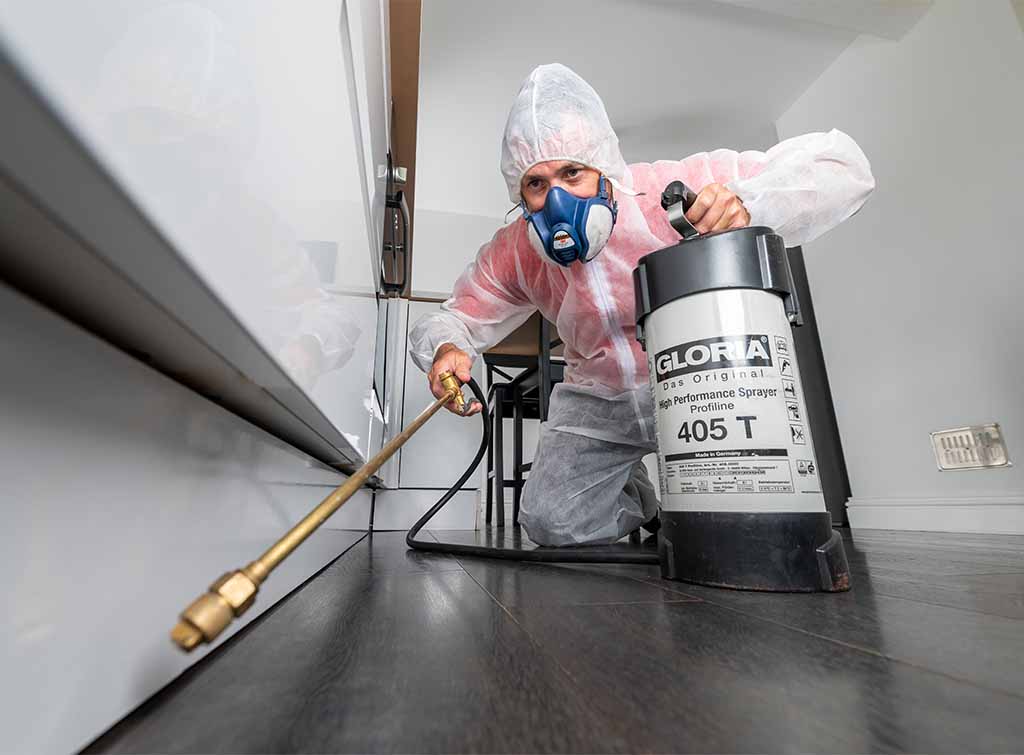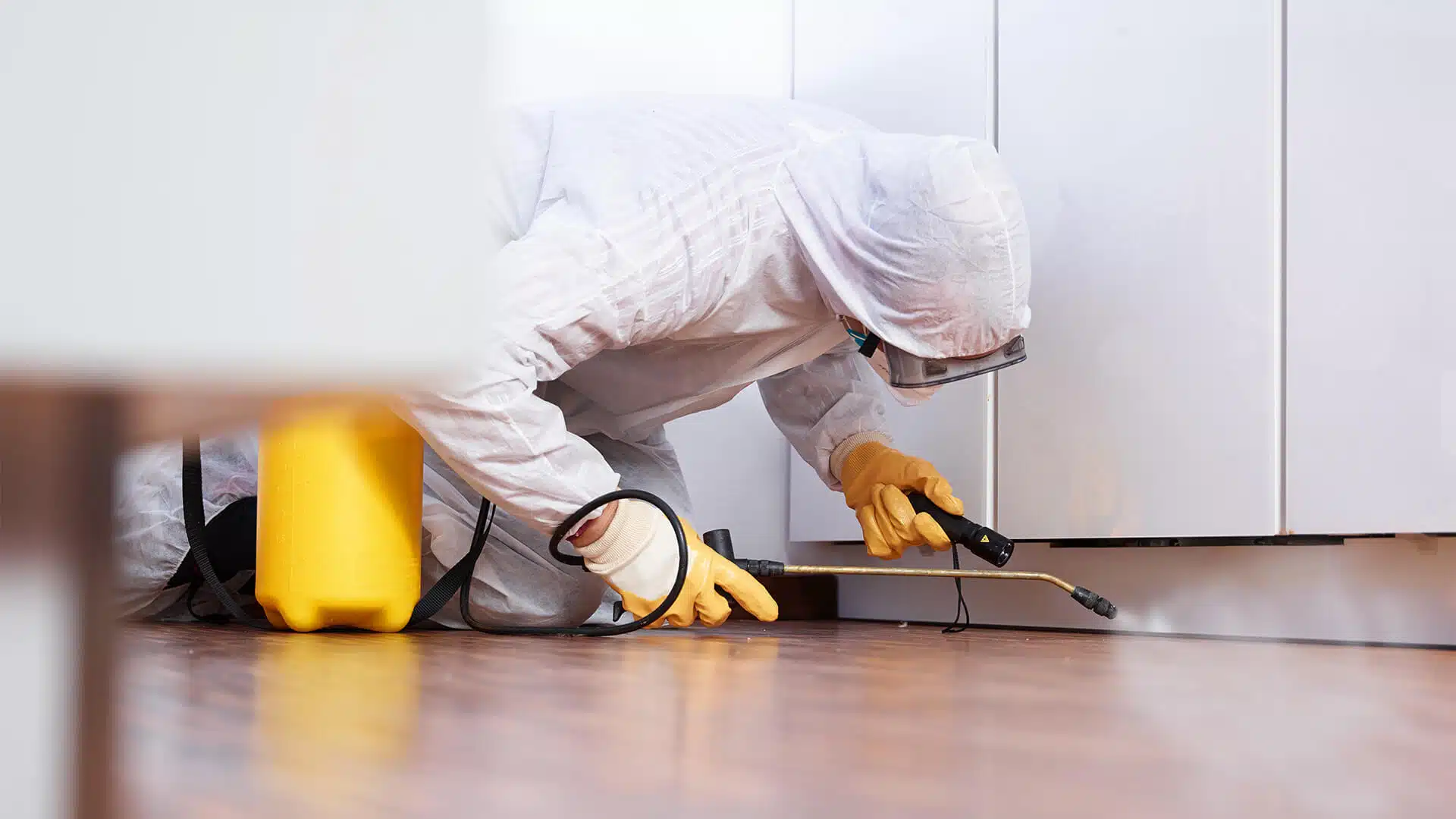Comprehensive Solutions for Chicago Pest Control for Restaurants: Keep Your Establishment Pest-Free
Comprehensive Solutions for Chicago Pest Control for Restaurants: Keep Your Establishment Pest-Free
Blog Article
Discovering Various Methods and Techniques for Comprehensive Pest Control in Residential Spaces
The landscape of insect control in domestic areas has developed substantially, requiring a complete understanding of numerous techniques that can be used for efficient administration. Standard chemical treatments, while effective, are increasingly being complemented by eco-friendly choices and Integrated Parasite Monitoring (IPM) methods. House owners should consider preventative measures, such as normal tracking and precise pest recognition, to preserve a healthy environment. The genuine challenge exists in striking a balance in between effectiveness and safety-- an expedition that discloses the subtleties of each technique and its ramifications for lasting living.
Recognizing Insect Control Essential
Effective bug control is essential for preserving a healthy and balanced and risk-free living atmosphere. Recognizing the basics of insect control includes identifying the kinds of bugs that generally invade domestic rooms, the possible risks they position, and the value of safety nets. Typical family parasites consist of rodents, insects, and other unwanted animals that can endanger health, damages residential property, and cause health issues.
A vital very first step in parasite control is recognizing the details pests present. This can involve inspecting areas such as attics, kitchens, and basements, where parasites are most likely to grow. As soon as determined, it is vital to comprehend their routines, breeding cycles, and chosen environments, which can inform ideal control approaches.
Safety nets are essential to efficient insect administration. These include sealing access factors, preserving cleanliness, and reducing mess to get rid of hiding places. Furthermore, proper food storage space and waste monitoring can substantially decrease the attraction of a home for bugs.

Conventional Chemical Treatments
Amongst the various bug control approaches, traditional chemical treatments have long been utilized to attend to problems in household rooms. These treatments generally include the application of chemical pesticides created to get rid of parasites such as pests, rats, and various other undesirable microorganisms. The performance of these chemicals can differ, relying on the sort of parasite, the solution of the chemical, and the approach of application.
Usual courses of standard chemical therapies include insecticides, rodenticides, fungicides, and herbicides, each customized to deal with certain bugs. Insecticides, as an example, may target ants, termites, or roaches, while rodenticides are particularly developed to control rodent populaces. These chemicals are usually readily available in different forms, including baits, sprays, and granules, permitting home owners versatility in application.
Despite their performance, standard chemical treatments raise problems relating to potential poisoning to people, pets, and valuable microorganisms in the environment. It is vital for home owners to very carefully follow application guidelines and safety and security precautions to decrease dangers. Integrated Parasite Administration (IPM) approaches can complement these therapies, ensuring a much more holistic technique to pest control while making the most of efficiency and safety in domestic setups.
Eco-Friendly Pest Control Options
Environment-friendly pest control choices are obtaining popularity as property owners look for more secure and much more lasting choices to traditional chemical treatments. These techniques focus on the health of both locals and the setting, minimizing the impact of insect control methods.
One extensively adopted environmentally friendly technique is using all-natural repellents derived from vital oils, such as pepper mint and citronella. These oils not just hinder parasites but also offer pleasurable scents for interior rooms. In addition, diatomaceous planet, a powder made from fossilized algae, acts as a natural insecticide by harming the exoskeletons of insects upon contact, leading to dehydration.
An additional reliable strategy includes promoting biodiversity in gardens and lawns. Introducing advantageous insects, such as ladybugs and lacewings, can naturally control pest populaces (Chicago pest control for restaurants). Additionally, employing catches made from eco-friendly products can assist capture and remove pests without causing injury to the ecological community
Regular maintenance, such as sealing entry points and correct cleanliness, further enhances the performance of environment-friendly insect control. Property owners can take aggressive procedures to stop infestations, making certain a much more sustainable living setting while successfully managing pest-related concerns.
Integrated Insect Monitoring Methods
Executing incorporated insect management (IPM) methods provides a thorough method to pest control that stresses prevention and lasting services. IPM incorporates multiple methods, focusing on recognizing pest actions, life More Bonuses cycles, and environmental characteristics to reduce parasite populations successfully. This complex technique focuses on non-chemical methods, such as biological control, environment manipulation, and cultural methods, to lower reliance on chemicals.
A fundamental aspect of IPM is keeping an eye on and recognizing insects precisely. This entails regular evaluations and the facility of activity thresholds to identify when treatment is essential. By comprehending the details pests affecting domestic atmospheres, targeted treatments can be utilized, lowering the chance of unneeded chemical applications.
Another crucial element of IPM is informing house owners regarding the value of hygiene and upkeep techniques. By promoting an atmosphere that inhibits pest problems-- such as securing access factors and taking care of wetness-- citizens can substantially alleviate the danger of bug issues. Furthermore, when chemical controls are deemed necessary, IPM advocates for using the least poisonous alternatives to lessen environmental impact. Through these approaches, IPM not just addresses present insect issues yet additionally promotes sustainable practices that advertise long-lasting insect management success.
Preventative Procedures for Homes
To repel potential parasite infestations, home owners ought to take on a positive strategy that highlights preventative actions. This begins with keeping a clean and orderly home, as clutter and food particles attract bugs. Chicago wasp nest removal. Frequently vacuuming, sweeping, and cleaning down surfaces can substantially lower check this the risk of invasions
In addition, sealing entrance factors is crucial. House owners need to inspect windows, doors, and structure splits for gaps that might permit bugs accessibility to the home. Using caulk and weather condition stripping can properly block these entranceways.
Correct food storage space is an additional important measure. Keeping food in airtight containers and quickly tidying up spills or crumbs assists deter rodents and insects.
In addition, handling outside atmospheres can stop parasites from elbowing in on residential spaces. Property owners ought to guarantee that drain systems are working well, and landscaping is kept tidy. Trimming trees and shrubs away from your house and getting rid of standing water can better lessen parasite environments.

Final Thought
In final thought, effective pest control in household rooms requires a multifaceted approach that incorporates standard chemical treatments with eco-friendly techniques and Integrated Bug Management strategies. By focusing on preventative steps, such as keeping tidiness and sealing access points, homeowners can dramatically minimize pest events. Regular surveillance and precise pest recognition further improve management initiatives. Ultimately, a well balanced methodology that incorporates all-natural repellents sites and least hazardous chemicals fosters a healthy and secure living environment while resolving pest-related challenges.
Understanding the fundamentals of bug control entails recognizing the types of insects that frequently attack household spaces, the potential risks they position, and the value of preventative actions.A crucial very first step in insect control is determining the certain bugs existing. Integrated Parasite Monitoring (IPM) approaches can enhance these therapies, ensuring an extra all natural strategy to pest control while making the most of efficacy and safety in residential settings.
Implementing integrated pest monitoring (IPM) approaches supplies a thorough technique to pest control that highlights avoidance and long-lasting services.In conclusion, reliable parasite control in property areas necessitates a multifaceted strategy that integrates conventional chemical treatments with eco-friendly techniques and Integrated Bug Administration techniques.
Report this page